KitchenAid YKHMS2050SB, YKHMS2050SW Installation Instructions
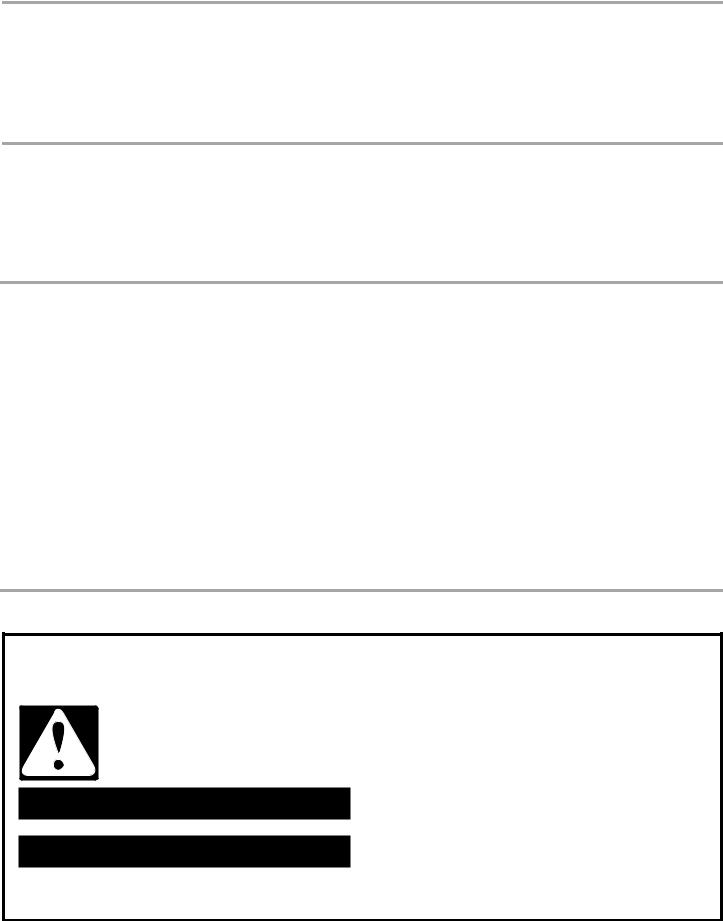
MICROWAVE HOOD COMBINATION INSTALLATION INSTRUCTIONS
This product is suitable for use above electric or gas cooking products up to and including 30" (76.2 cm) wide. See “Installation Requirements” section for further notes.
These installation instructions cover different models. The appearance of your particular model may differ slightly from the illustration in these installation instructions.
INSTRUCTIONS D’INSTALLATION
DE L’ENSEMBLE FOUR À MICRO-ONDES/HOTTE
Ce produit est conçu pour l’utilisation au-dessus d’appareils de cuisson électriques ou à gaz de 30" (76,2 cm) de largeur ou moins. Voir la section “Exigences d’installation” pour d’autres remarques.
Ces instructions d’installation sont valables pour plusieurs modèles. Il se peut que l’apparence de votre propre modèle soit légèrement différente de celle montrée sur les illustrations dans ce document.
Table of Contents / Table des matières
MICROWAVE HOOD COMBINATION SAFETY |
.......................2 |
INSTALLATION REQUIREMENTS............................................ |
3 |
Tools and Parts ....................................................................... |
3 |
Location Requirements........................................................... |
3 |
Product Dimensions................................................................ |
4 |
Electrical Requirements .......................................................... |
4 |
INSTALLATION INSTRUCTIONS.............................................. |
5 |
Remove Mounting Plate.......................................................... |
5 |
Convert Microwave Oven to External Venting........................ |
5 |
Locate Wall Stud(s) ................................................................. |
7 |
Mark Rear Wall........................................................................ |
8 |
Drill Holes in Rear Wall............................................................ |
8 |
Attach Mounting Plate to Wall ................................................ |
9 |
Prepare Upper Cabinet ........................................................... |
9 |
Install the Microwave Oven.................................................. |
10 |
Complete Installation ........................................................... |
11 |
VENTING DESIGN SPECIFICATIONS................................... |
12 |
ASSISTANCE........................................................................... |
13 |
Replacement Parts............................................................... |
13 |
SÉCURITÉ DE L’ENSEMBLE FOUR À MICRO-ONDES/HOTTE .13
EXIGENCES D'INSTALLATION....................................................... |
13 |
Outillage et pièces......................................................................... |
13 |
Exigences d'emplacement............................................................ |
14 |
Dimensions du produit .................................................................. |
14 |
Spécifications électriques ............................................................. |
15 |
INSTRUCTIONS D'INSTALLATION................................................ |
15 |
Dépose de la plaque de montage................................................. |
15 |
Four à micro-ondes - conversion pour décharge à l'extérieur..... |
15 |
Identifier la position du/des poteaux du colombage mural.......... |
17 |
Tracé sur le mur arrière ................................................................. |
18 |
Perçage de trous dans le mur arrière............................................ |
19 |
Fixation de la plaque de montage sur le mur ............................... |
19 |
Préparation du placard mural........................................................ |
20 |
Installation du four à micro-ondes ................................................ |
21 |
Achever l'installation...................................................................... |
22 |
SPÉCIFICATIONS DU CIRCUIT D'ÉVACUATION......................... |
23 |
ASSISTANCE.................................................................................... |
24 |
Pièces de rechange....................................................................... |
24 |
MICROWAVE HOOD COMBINATION SAFETY
Your safety and the safety of others are very important.
We have provided many important safety messages in this manual and on your appliance. Always read and obey all safety messages.
This is the safety alert symbol.
This symbol alerts you to potential hazards that can kill or hurt you and others.
All safety messages will follow the safety alert symbol and either the word “DANGER” or “WARNING.” These words mean:
 DANGER
DANGER
 WARNING
WARNING
You can be killed or seriously injured if you don't immediately follow instructions.
You can be killed or seriously injured if you don't follow instructions.
All safety messages will tell you what the potential hazard is, tell you how to reduce the chance of injury, and tell you what can happen if the instructions are not followed.
W10189722A
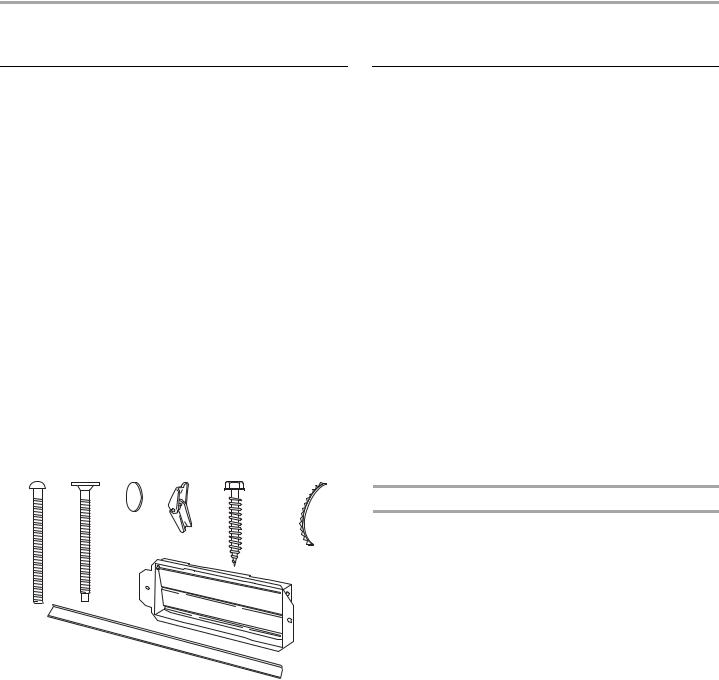
INSTALLATION REQUIREMENTS
The microwave oven is set for recirculation installation. For external (wall or roof) venting, see “Venting Design Specifications” section.
Tools and Parts
Tools Needed
Gather the required tools and parts before starting installation. Read and follow the instructions provided with any tools listed here.
■Measuring tape
■Pencil
■Masking tape or thumbtacks
■Scissors
■T10 TORX®† screwdriver
■No. 3 Phillips screwdriver for 1/4-20 x 3" bolts
■Electric drill
■3/16" (5 mm) and 3/8" (10 mm) drill bits
■3/4" (19 mm) hole saw
■Diagonal cutting pliers
■Stud finder
■7/16" socket wrench
(or box wrench) for 1/4" x 2" lag screws
■1½" (3.8 cm) diam. hole drill bit for wood or metal cabinet
■Keyhole saw
■Caulking gun and weatherproof caulking compound
■Duct tape
Parts Supplied
For information on reordering, see “Replacement Parts” section.
NOTE: The hardware items listed here are for wood studs. For other types of wall structures, be sure to use appropriate fasteners.
A  B
B  C
C  D E
D E  F
F  G
G
H
I
A.1/4-20 x 3" round-head bolts (2)
B.1/4-20 x 3" flat-head bolts (2)
C.Washers (2)
D.Toggle nuts (2)
E.1/4" x 2" lag screws (2)
F. Mounting screws (3)
G.Power supply cord bushing (1)
H.Damper assembly (for wall or roof venting)
I.Vent deflector (for wall or roof venting)
Not Shown:
Upper cabinet template
Mounting plate (attached to back of microwave oven)
Aluminum grease filters
Charcoal filters (Depending on model, charcoal filters may not be included. See Use and Care Guide.)
Location Requirements
Check the opening where the microwave oven will be installed. The location must provide:
■Minimum installation dimensions. See “Installation Dimensions” illustration.
■Minimum one 2" x 4" (50.8 x 101.6 mm) wood wall stud and minimum 3/8" (10 mm) thickness drywall or plaster/lath within cabinet opening.
■Support for weight of 150 lbs (68 kg), which includes microwave oven and items placed inside the microwave oven and upper cabinet.
■Grounded electrical outlet inside upper cabinet. See “Electrical Requirements” section.
NOTES:
■If installing the microwave oven near a left sidewall, make sure there is at least 3" (7.6 cm) of clearance between the wall and the microwave oven, so that the door can open fully.
■Some cabinet and building materials are not designed to withstand the heat produced by the microwave oven for cooking. Check with your builder or cabinet supplier to make sure that the materials used will not discolor, delaminate or sustain other damages.
■For gas cooktop, we recommend that combined cooking surface rating does not exceed 55,000 BTU/hr.
■The microwave oven is set for recirculation mode. For external (wall or roof) venting, see “Venting Design Specifications” section.
Special Requirements
For Wall Venting Installation Only:
■Cutout must be free of any obstructions so that the vent fits properly, and the damper blade opens freely and fully.
For Roof Venting Installation Only:
■If you are using a rectangular to round transition piece, 3" (7.6 cm) clearance needs to exist above the microwave
oven so that the damper blade can open freely and fully. See “Rectangular to Round Transition” illustration in “Venting Design Specifications” section.
NOTE: Depending on model, aluminum grease filter and charcoal filter may be combined.
Materials needed
■Standard fittings for wall or roof venting. See “Venting Design Specifications” section.
†®TORX is a registered trademark of Textron Innovations Inc.
2
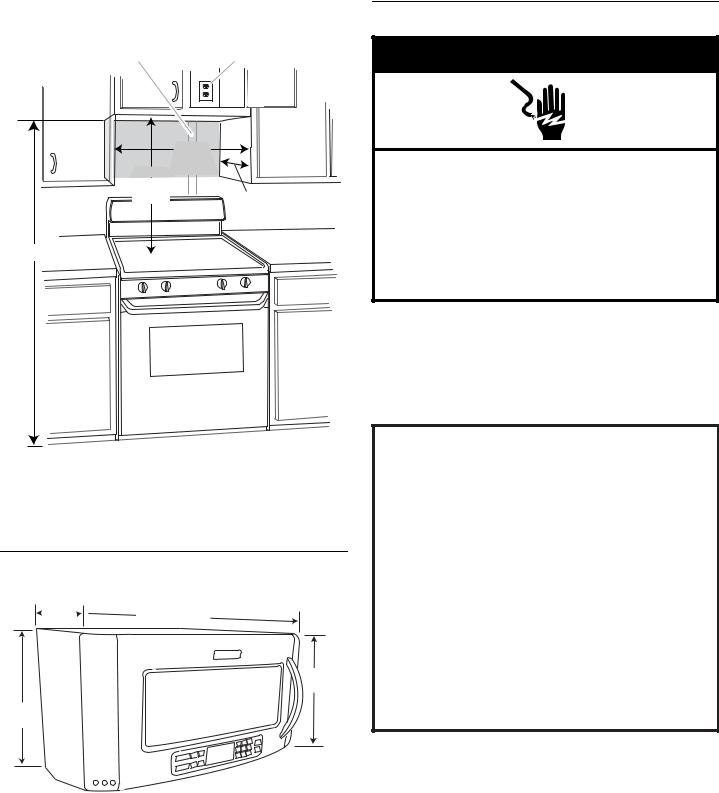
Installation Dimensions
NOTE: The grounded 3 prong outlet must be inside the upper cabinet. See “Electrical Requirements” section.
A B
69" (175.3 cm) min. |
|
30" |
|
(76.2 cm) |
33" |
min. |
|
|
(83.2 cm) |
|
typical* |
12" (30.5 cm) min. |
|
|
|
13" (33.0 cm) max. |
A.2" x 4" wall stud
B.Grounded 3 prong outlet
*33" (83.2 cm) is typical for 69" (175.3 cm) installation height. Exact dimension may vary depending on type of range/cooktop below.
Product Dimensions
18¹⁄ " (46.4 cm) 
 29 ⁄ " (76.0 cm)
29 ⁄ " (76.0 cm)
15¹⁄ " (39.4 cm)
18¹⁄ " (46.4 cm)
Electrical Requirements
 WARNING
WARNING
Electrical Shock Hazard
Plug into a grounded 3 prong outlet.
Do not remove ground prong.
Do not use an adapter.
Do not use an extension cord.
Failure to follow these instructions can result in death, fire, or electrical shock.
Observe all governing codes and ordinances.
Required:
■A 120 Volt, 60 Hz, AC only, 15or 20-amp electrical supply with a fuse or circuit breaker.
Recommended:
■A time-delay fuse or time-delay circuit breaker.
■A separate circuit serving only this microwave oven.
GROUNDING INSTRUCTIONS
■For all cord connected appliances:
The microwave oven must be grounded. In the event of an electrical short circuit, grounding reduces the risk of electric shock by providing an escape wire for the electric current. The microwave oven is equipped with a cord having a grounding wire with a grounding plug. The plug must be plugged into an outlet that is properly installed and grounded.
WARNING: Improper use of the grounding plug can result in a risk of electric shock. Consult a qualified electrician or serviceman if the grounding instructions are not completely understood, or if doubt exists as to whether the microwave oven is properly grounded.
Do not use an extension cord. If the power supply cord is too short, have a qualified electrician or serviceman install an outlet near the microwave oven.
SAVE THESE INSTRUCTIONS
3
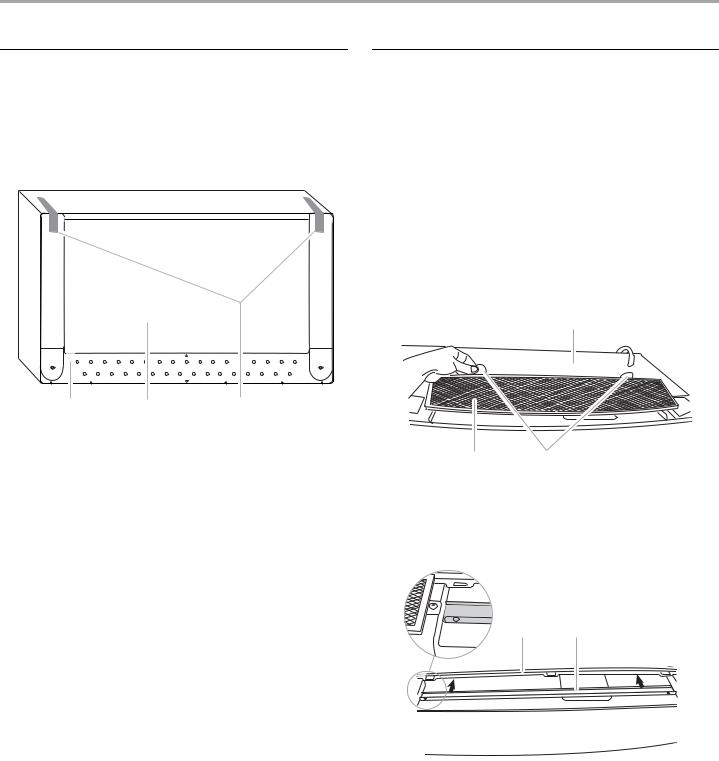
INSTALLATION INSTRUCTIONS
Remove Mounting Plate
NOTE: To avoid possible damage to the work surface, cover the work surface.
1.Remove any remaining contents from the microwave oven cavity.
2.Remove the mounting plate by peeling off the strips of tape that attach it to the back of the microwave oven, and set the mounting plate aside.
A B C
A.Mounting plate
B.Back of microwave oven
C.Tape (multiple locations)
3.Tape the microwave oven door closed so that door does not swing open while the microwave oven is being handled.
NOTE: To avoid damage to the microwave oven, do not grip or use the door or door handle while the microwave oven is being handled.
Convert Microwave Oven to
External Venting
(for wall or roof venting only)
The microwave oven is set for recirculation installation. For wall or roof venting, changes must be made to the venting system. See “Venting Design Specifications” section.
NOTE: Skip this section if you are using recirculation installation. Keep the damper assembly in case the venting method is changed, or the microwave oven is reinstalled in another location where wall or roof venting may be used.
To prepare the microwave oven for wall or roof venting, the vent deflector (L-shaped metal bar) must be installed, and the appropriate damper vent opening must be uncovered.
To Install Vent Deflector:
1.Gently pull the rings and lift vent screen from the top of the microwave oven.
A
BC
A.Top of microwave oven
B.Vent screen
C.Rings
2.With vent deflector oriented as shown (wide side down), slide it back and under the back edge of the vent opening.
A B
A.Vent opening
B.Vent deflector
4

3.When the vent deflector is as far back as it can easily slide, flip it so that the wide side is to the back of the microwave oven, and the narrow side (with holes) is down. The vent deflector holes should align with mounting holes in the vent opening, as shown in inset.
A B
A.Vent opening
B.Vent deflector
4.Secure vent deflector with 2 mounting screws (1 on each end).
A B
A.Mounting screw
B.Vent deflector
5.Replace vent screen.
Wall Venting Installation Only
To Remove Wall Damper Vent Cover:
1.Locate the wall damper vent cover on the back of the microwave oven.
2.Using diagonal wire cutting pliers, gently snip out the damper vent cover at the perforations.
A B C D
A.Diagonal wire cutting pliers
B.Back of microwave oven
C.Wall damper vent cover
D.Perforations
3.Save the cover for possible change of venting method in the future.
4.Position the damper assembly so that the long tab slides into the slot on the right side of the damper vent opening, as shown. Then secure with mounting screw.
A B C
A.Mounting screw
B.Damper assembly
C.Long tab (inside slot)
Roof Venting Installation Only
To Remove Roof Damper Vent Cover:
1.Locate the roof damper vent cover on the top of the microwave oven.
2.Using diagonal wire cutting pliers, gently snip out the damper vent cover at the perforations.
A B C
D
A.Diagonal wire cutting pliers
B.Top of microwave oven
C.Roof damper vent cover
D.Perforations
3.Save the cover for possible change of venting method in the future.
NOTE: Do not install damper assembly at this time.
5

Locate Wall Stud(s)
NOTE: If no wall studs exist within the cabinet opening, do not install the microwave oven.
See illustrations in “Possible Wall Stud Configurations.”
1.Using a stud finder, locate the edges of the wall stud(s) within the opening.
2.Mark the center of each stud, and draw a plumb line down each stud center. See illustrations in “Possible Wall Stud Configurations.”
Possible Wall Stud Configurations |
|
|
|
|
|
|
|
These depictions show examples of preferred installation configurations with the mounting plate. |
|
||||||
|
No Wall Studs at Corner Holes |
|
|
|
|
No Wall Studs at Corner Holes |
|
|
Figure 1 |
|
|
|
|
Figure 2 |
|
C |
<![if ! IE]> <![endif]>MOUNTING |
<![if ! IE]> <![endif]>MOUNTING |
C |
|
<![if ! IE]> <![endif]>MOUNTING |
<![if ! IE]> <![endif]>MOUNTING |
|
B |
|
|
|
|
|
|
C |
|
|
|
|
|
|
|
|
|
<![if ! IE]> <![endif]>PLATE |
<![if ! IE]> <![endif]>PLATE |
|
B |
<![if ! IE]> <![endif]>PLATE |
<![if ! IE]> <![endif]>PLATE |
D |
|
D |
|
|||||
|
|
|
|
|
|
||
|
|
|
|
|
|
|
|
A |
A |
A |
A |
E |
E |
E |
E |
F |
|
F |
|
NOTE: If wall stud is within 6" (15.2 cm) of the vertical centerline (see “Mark Rear Wall” section), only recirculation or roof venting installation can be done.
Wall Stud at One Corner Hole |
Wall Studs at Both Corner Holes |
Figure 3 |
Figure 4 |
B |
<![if ! IE]> <![endif]>MOUNTING |
<![if ! IE]> <![endif]>MOUNTING |
D |
B |
<![if ! IE]> <![endif]>MOUNTING |
<![if ! IE]> <![endif]>MOUNTING |
|
<![if ! IE]> <![endif]>PLATE |
<![if ! IE]> <![endif]>PLATE |
|
|
<![if ! IE]> <![endif]>PLATE |
<![if ! IE]> <![endif]>PLATE |
A |
A,D |
A,D |
A,D |
E |
E |
E |
E |
C |
C |
C |
C |
F |
|
F |
|
A.Corner holes (on mounting plate)
B.Cabinet opening vertical centerline
C.Wall stud centerlines
D.Holes for lag screws
E.Support tabs
F. Mounting plate center markers
6
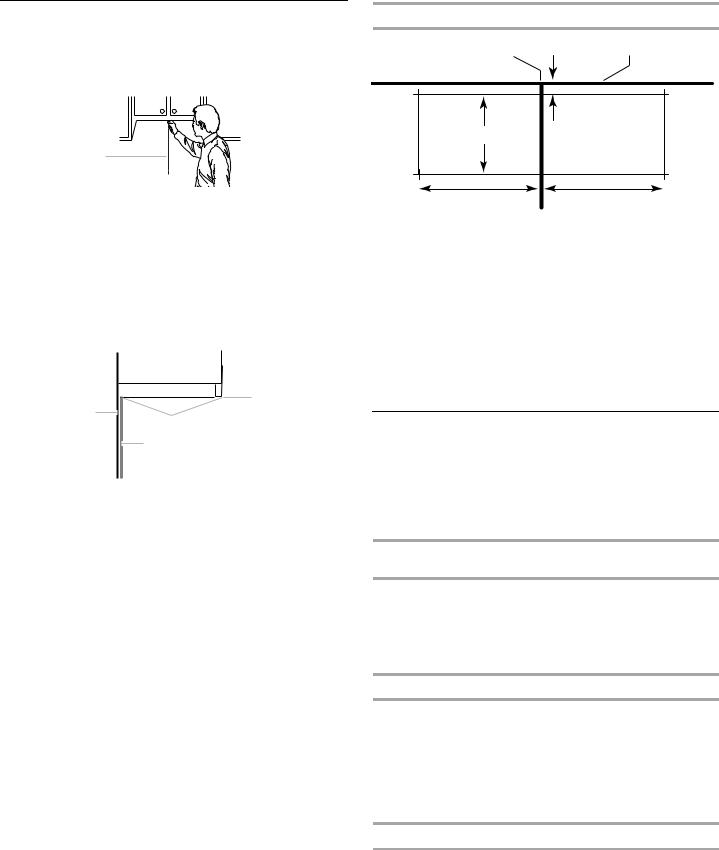
Mark Rear Wall
The microwave oven must be installed on a minimum of 1 wall stud, preferably 2, using a minimum of 1 lag screw, preferably 2.
1.Using measuring tape, find and clearly mark the vertical centerline of the opening.
A
A.Centerline
2.With the support tabs facing forward (see illustrations in “Possible Wall Stud Configurations” in “Locate Wall Stud(s)” section), align the mounting plate center markers to the centerline on the wall, making sure it is level, and that the top of the mounting plate is butted up against the bottom edge of the upper cabinet.
NOTE: If the front edge of the upper cabinet is lower than the back edge, lower the mounting plate so that its top is level with the front edge of the cabinet.
D
A
C
B
A.Rear wall
B.Mounting plate
C.Top of mounting plate must align with front edge of cabinet.
D.Front edge of upper cabinet
3.Holding the mounting plate in place, mark both bottom corner holes.
4.Find the wall stud centerline(s) marked in Step 2 of “Locate Wall Stud(s),” and mark at least 1, preferably 2, hole(s) through the mounting plate, closest to the centerline(s). See figures 1, 2 and/or 3 in “Possible Wall Stud Configurations” in “Locate Wall Stud(s)” section. The blackened holes in the shaded areas are ideal hole locations.
5.Set mounting plate aside.
Wall Venting Installation Only
Centerline |
Upper cabinet bottom |
|
³⁄" (1 cm) |
4" (10.2 cm) |
|
6" (15.2 cm) |
6" (15.2 cm) |
6.Mark the centerline 3/8" (1 cm) down from the bottom edge of the upper cabinet.
7.Using measuring tape, measure out 6" (15.2 cm) on both sides of the centerline, and mark.
8.Measure down 4" (10.2 cm) from the mark made in Step 6, and mark.
9.Using a straightedge, draw the 2 horizontal, level lines through the marks made in steps 6 and 8.
10.Draw the 2 vertical, plumb lines down from the marks made in Step 7 to complete the 12" x 4" (30.5 x 10.2 cm) rectangle. This is the venting cutout area.
11.Cut a 3/4" (19 mm) hole in one corner of the cutout area.
12.Using a keyhole saw, cut out the venting cutout area.
Drill Holes in Rear Wall
In addition to being installed on at least 1 wall stud, the mounting plate must attach to the wall at both bottom corner holes. If the holes are not over wall studs, use two 1/4-20 x 3" round-head bolts with toggle nuts; if 1 hole is over a wall stud, use 1 lag screw and one 1/4-20 x 3" round-head bolt with toggle nut; or if both holes are over wall studs, use 2 lag screws. Following are
3 installation configurations.
Installation for No Wall Studs at Corner Holes (Figures 1 & 2)
1.Drill 3/4" (19 mm) holes through the wall at both bottom corner holes marked in Step 3 of “Mark Rear Wall.”
2.Drill 3/16" (5 mm) hole(s) into the wall stud(s) at the hole(s) marked in Step 4 of “Mark Rear Wall.” Refer to figures 1 and 2 in “Possible Wall Stud Configurations” in “Locate Wall Stud(s)” section.
Installation for Wall Stud at One Corner Hole (Figure 3)
1.Drill a 3/16" (5 mm) hole into the wall stud at the corner hole marked in Step 3 of “Mark Rear Wall.”
2.If installing on a second wall stud, drill a 3/16" (5 mm) hole into the wall stud at the other hole marked in Step 4 of “Mark Rear Wall.” Refer to Figure 3 in “Possible Wall Stud Configurations” in “Locate Wall Stud(s)” section.
3.Drill a 3/4" (19 mm) hole through the wall at the other corner hole.
Installation for Wall Studs at Both Corner Holes (Figure 4)
1.Drill 3/16" (5 mm) holes into the studs at the corner holes marked in Step 3 of “Mark Rear Wall.”
7
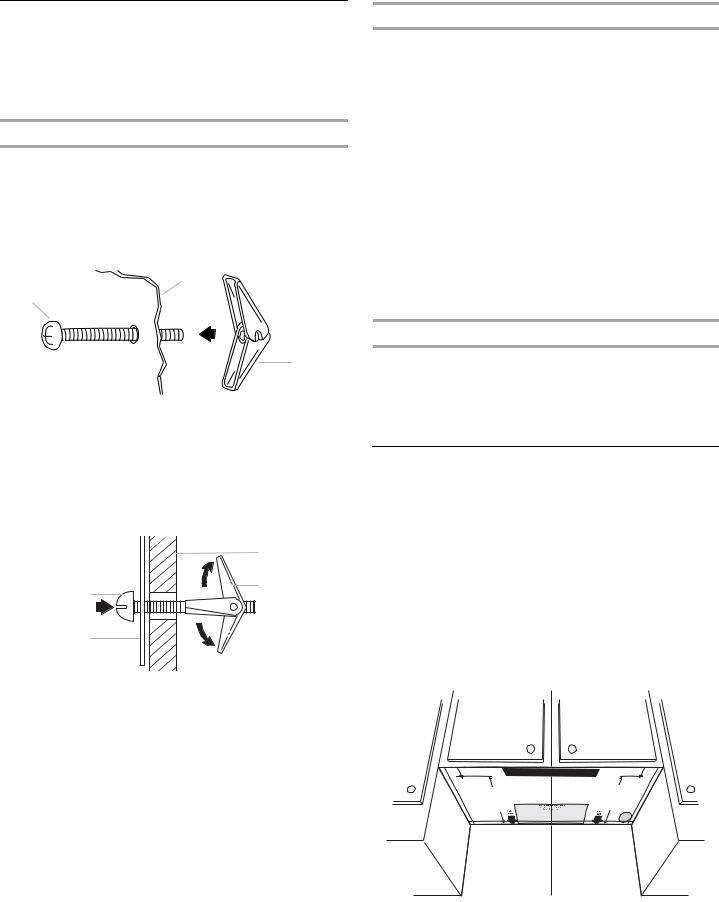
Attach Mounting Plate to Wall
NOTE: Secure the mounting plate to the wall at both bottom corner holes drilled into the wall studs and/or drywall using either 1/4-20 x 3" round-head bolts and toggle nuts or 1/4 x 2" lag screws.
Refer to illustrations in “Possible Wall Stud Configurations” in “Locate Wall Stud(s)” section.
No Wall Studs at Corner Holes (Figures 1 & 2)
NOTE: The mounting plate must be secured to the wall on at least 1 wall stud as well as at both bottom corners.
1.With the support tabs of the mounting plate facing forward, insert 1/4-20 x 3" round-head bolts through both bottom corner holes of mounting plate.
2.Start toggle nuts on bolts from the back of the mounting plate. Leave enough space for the toggle nuts to go through the wall and to open.
B
A
C
A.1/4-20 x 3" round-head bolt
B.Mounting plate
C.Spring toggle nut
3.Position mounting plate on the wall, making sure that the top of the mounting plate is aligned with the front edge of the upper cabinet.
4.Push the 2 bolts with toggle nuts through the drywall, and finger tighten the bolts to make sure toggle nuts have opened against drywall.
C |
D |
A |
B |
A. 1/4-20 x 3" round-head bolt |
B.Mounting plate
C.Drywall
D.Spring toggle nut
5.Insert lag screw(s) into the holes drilled into wall stud(s) in Step 2 of “Installation for No Wall Studs at Corner Holes” in the “Drill Holes in Rear Wall” section.
6.Check alignment of mounting plate, making sure it is level.
7.Securely tighten all lag screws and bolts.
Wall Stud at One Corner Hole (Figure 3)
1.With the support tabs of the mounting plate facing forward, insert a 1/4-20 x 3" round-head bolt through the corner hole that fits over the 3/4" (19 mm) hole drilled in Step 3 of “Installation for Wall Stud at One Corner Hole” in the “Drill Holes in Rear Wall” section.
2.Start a toggle nut on the bolt from the back of the mounting plate. Leave enough space for the toggle nut to go through the wall and to open.
3.Position mounting plate on the wall, making sure that the top of the mounting plate is aligned with the front edge of the upper cabinet.
4.Push the bolt with toggle nut through the drywall, and finger tighten the bolt to make sure toggle nut has opened against drywall.
5.Insert a lag screw into the remaining bottom corner hole.
6.If installing on a second wall stud, insert a lag screw into the other hole drilled in Step 2 of “Installation for Wall Stud at One Corner Hole” in the “Drill Holes in Rear Wall” section.
7.Check alignment of mounting plate, making sure it is level.
8.Securely tighten the lag screw(s) and bolt.
Wall Studs at Both Corner Holes (Figure 4)
1.Position mounting plate on the wall, making sure that the top of the mounting plate is aligned with the front edge of the upper cabinet.
2.Insert lag screws into both bottom corner holes.
3.Check alignment of mounting plate, making sure it is level.
4.Securely tighten the lag screws.
Prepare Upper Cabinet
1.Disconnect power to outlet.
2.Remove all contents from upper cabinet.
3.Place Upper Cabinet Template against the bottom of the upper cabinet, and tape or tack it in place. Make sure the template centerline aligns with the vertical centerline on the rear wall.
The “rear wall” arrows must be against the rear wall so that the holes cut into the upper cabinet align with the holes in the top of the microwave oven.
NOTE: If the upper cabinet has a frame around it, trim the template edges so that it fits inside the frame, against the upper cabinet bottom. The template has trim lines to use as guides.
4.Make sure the 10¹⁄" (26.7 cm) dimension from the rear wall to points “D” and “E” on the template is maintained.
Upper-cabinet template |
|
|
D |
|
E |
10¹⁄ " |
|
10¹⁄ " |
(26.7 cm) |
F |
(26.7 cm) |
|
G |
|
|
|
|
8
